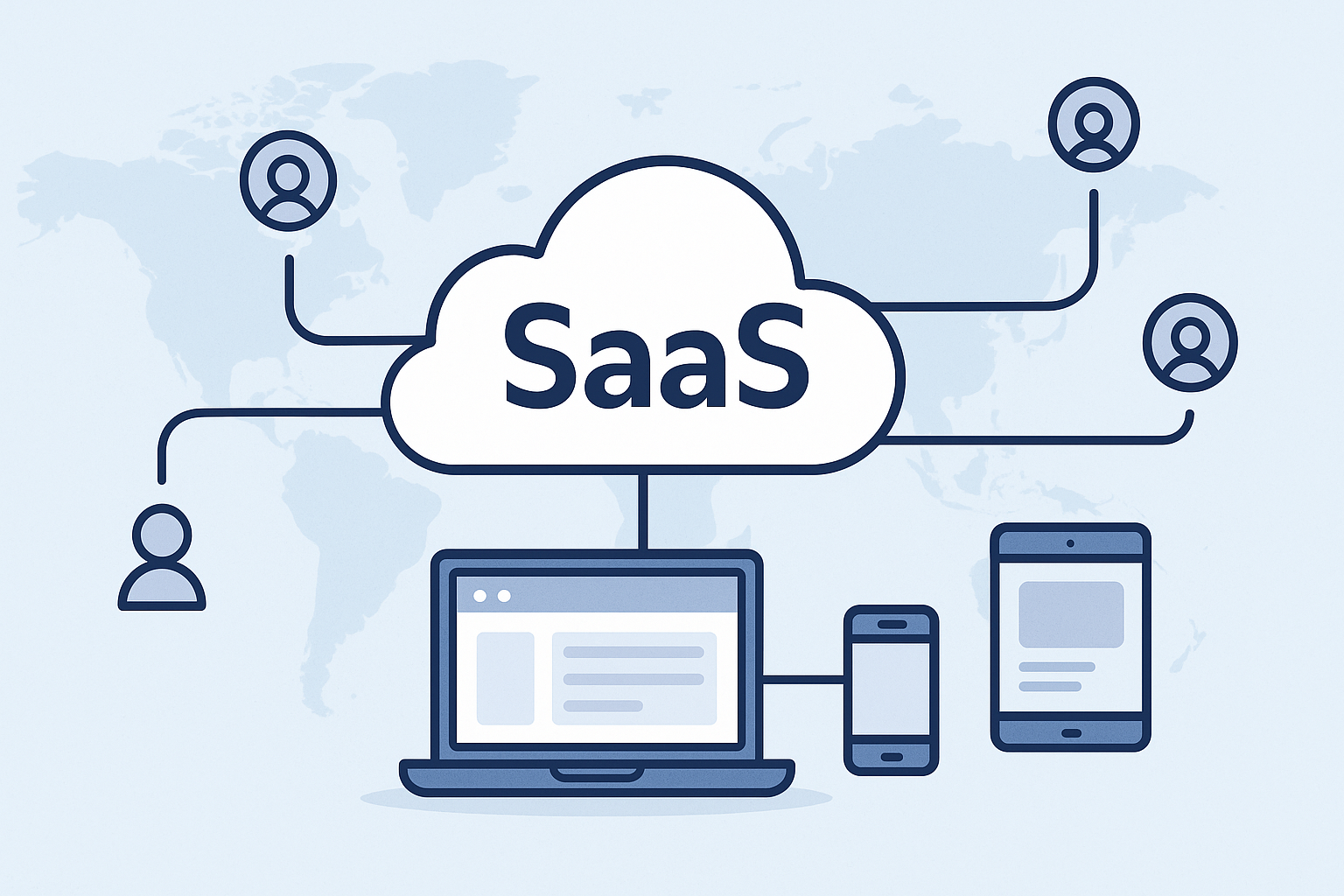Software as a Service (SaaS) has reshaped how we use technology in both business and everyday life. From managing projects to sending emails and running entire customer support systems, SaaS tools have become the backbone of modern digital operations.
In this post, you’ll learn what SaaS is, how it works, and why it’s become the go-to model for software delivery.
What Is SaaS?
SaaS (Software as a Service) is a software delivery model where applications are hosted in the cloud and accessed via the internet, rather than being installed locally on a user’s computer.
You don’t need to buy or install the software—just log in through a web browser and start using it.
Popular examples:
- Gmail (email)
- Zoom (video conferencing)
- Shopify (eCommerce)
- Slack (team communication)
- Salesforce (CRM)
How Does SaaS Work?
SaaS platforms are hosted on remote servers managed by the software provider. Here’s a simplified breakdown of the process:
- Cloud Hosting: The software is stored and runs on the vendor’s servers, often using cloud infrastructure like AWS, Azure, or Google Cloud.
- User Access via Web: Customers access the software through a browser or mobile app—no downloads or complex setup required.
- Subscription Billing: Instead of a one-time purchase, SaaS is usually billed monthly or annually, often with tiered pricing based on features or users.
- Automatic Updates: Providers regularly update and improve the software, and all users automatically get access to the latest version.
- Scalability: SaaS platforms typically allow businesses to scale up (or down) based on need, by adjusting user counts or feature sets instantly.
Key Features of SaaS
| Feature | Description |
|---|---|
| Cloud-Based Access | Use software from any device with an internet connection |
| Subscription Model | Pay-as-you-go pricing with minimal upfront costs |
| Automatic Updates | No manual upgrades or version installs |
| Multi-Tenant Model | One version of the app serves multiple customers simultaneously |
| Scalability | Easily adjust service levels, users, or storage as needed |
Benefits of SaaS
- Low upfront investment
- Fast implementation
- Accessibility from anywhere
- Reduced IT burden
- Flexible scaling options
Common Use Cases
SaaS is used across virtually every industry. Here are a few examples:
| Department | SaaS Tool Example | Purpose |
|---|---|---|
| Marketing | Mailchimp, HubSpot | Email marketing, automation |
| Sales & CRM | Salesforce, Pipedrive | Lead tracking, pipeline management |
| Project Management | Trello, ClickUp | Task tracking, collaboration |
| Customer Support | Zendesk, Intercom | Ticketing systems, live chat |
| Finance | QuickBooks, Xero | Accounting and expense tracking |
Potential Drawbacks
While SaaS is ideal for many use cases, it’s important to consider a few limitations:
- Requires a stable internet connection
- Data is stored on third-party servers
- Less customization compared to on-premise solutions
- Ongoing subscription fees can add up
SaaS vs Traditional Software
| Factor | SaaS | Traditional Software |
|---|---|---|
| Installation | No install needed | Must be manually installed |
| Updates | Automatic | User-initiated or IT-managed |
| Access | Web-based | Desktop-based |
| Pricing | Subscription (monthly/annual) | One-time license fee |
| IT Involvement | Minimal | Requires IT support |
Conclusion
SaaS is a flexible, cost-effective model that makes powerful software accessible to businesses of all sizes. With no installation hassles, scalable pricing, and real-time access from anywhere, it’s no surprise SaaS continues to dominate the software industry.
If you’re looking for efficient, future-ready solutions, SaaS is likely the best place to start.
